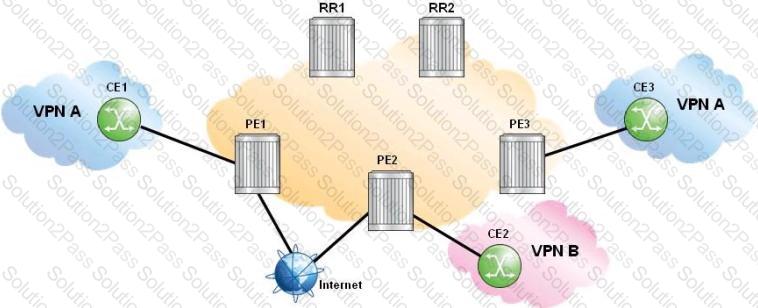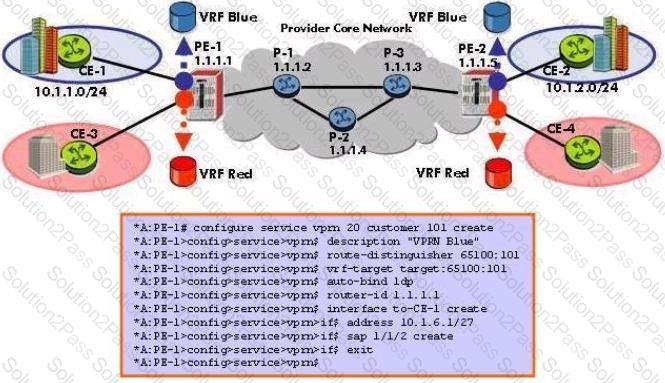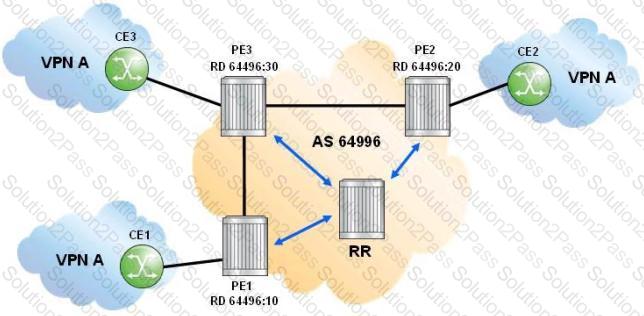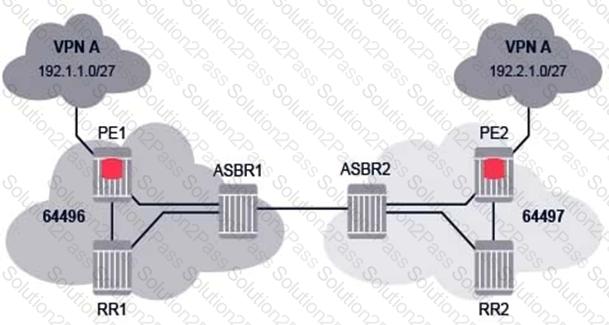4A0-106 Nokia Virtual Private Routed Networks Free Practice Exam Questions (2025 Updated)
Prepare effectively for your Nokia 4A0-106 Nokia Virtual Private Routed Networks certification with our extensive collection of free, high-quality practice questions. Each question is designed to mirror the actual exam format and objectives, complete with comprehensive answers and detailed explanations. Our materials are regularly updated for 2025, ensuring you have the most current resources to build confidence and succeed on your first attempt.
Click the exhibit.

All sites in the displayed network require Internet access. Route reflector 1(RR1) is used for Internet routes only and route reflector 2(RR2) is used for VPN routes only. Which of the following is FALSE?
Which of the following is not a valid BGP design for a network provider supporting VPRNs?
Click the exhibit.

Routers RR1 and RR2 are configured as route reflectors. For the inter-AS model C VPRN, which of the following about the BGP sessions established between the routers is TRUE?
On a PE router, the VRF table for VPRN 10 contains: one local route, two BGP routes learned from a local CE. and three tunneled routes learned from a remote site. If we execute the command "configure service vprn 10 maximum-routes 2 log-only" on this PE router, how many routes are expected to be in the VRF?
Click the exhibit.

What is wrong with the VPRN configuration applied on this Nokia 7750 SR?
Which of the following about inter-AS model B VPRN is FALSE?
Click the exhibit.

For the inter-AS model B VPRN, which of the following is TRUE when CE2 sends an IP packet to 192.168.1.1?
Click the exhibit.

A Carrier Supporting Carrier (CSC) VPRN is configured for a customer carrier who is an Internet Service Provider (ISP). If CE1 sends an IP packet to 192.60.100.1, which of the following is FALSE?
Click the exhibit.

One Route Distinguisher is assigned per VRF. If CE1 and CE2 advertise prefix 10.1.1.0/24, which of the following statements is FALSE?
Which of the following about Carrier Supporting Carrier (CSC) VPRN is FALSE?
For the Inter-AS model C VPRN, which of the following is FALSE when an IP packet is sent from 192.1.1.1 to 192.2.1.1?

Which of the following about the Route Target is TRUE?
When does a router add a Route Target to a route?
An SDP has been configured for a VPRN service using an existing MPLS LSP and the configuration shown below. Which of the statements below is true about the configuration on an Nokia 7750 SR?
Which of the following about BGP Site of Origin (SoO) is FALSE?
Which of the following terms also correctly describes a Layer 3 VPN?(Choose three)
You are configuring spoke SDP termination of a VPLS service on a VPRN interface on an Nokia 7750 SR. The spoke SDP is running over a NULL encapsulated network port. The best practice is to set the VPRN interface p-mtu equal to what value over a NULL encapsulated network port.
What are the two main benefits of a hub and spoke VPRN design? (Choose two)
Click the exhibit.

For the Carrier Supporting Carrier (CSC) VPRN, which routes are advertised between CSC-CE1 andCSC-PE1?
Which of the following about the control plane in Carrier Supporting Carrier (CSC) VPRN is FALSE?
